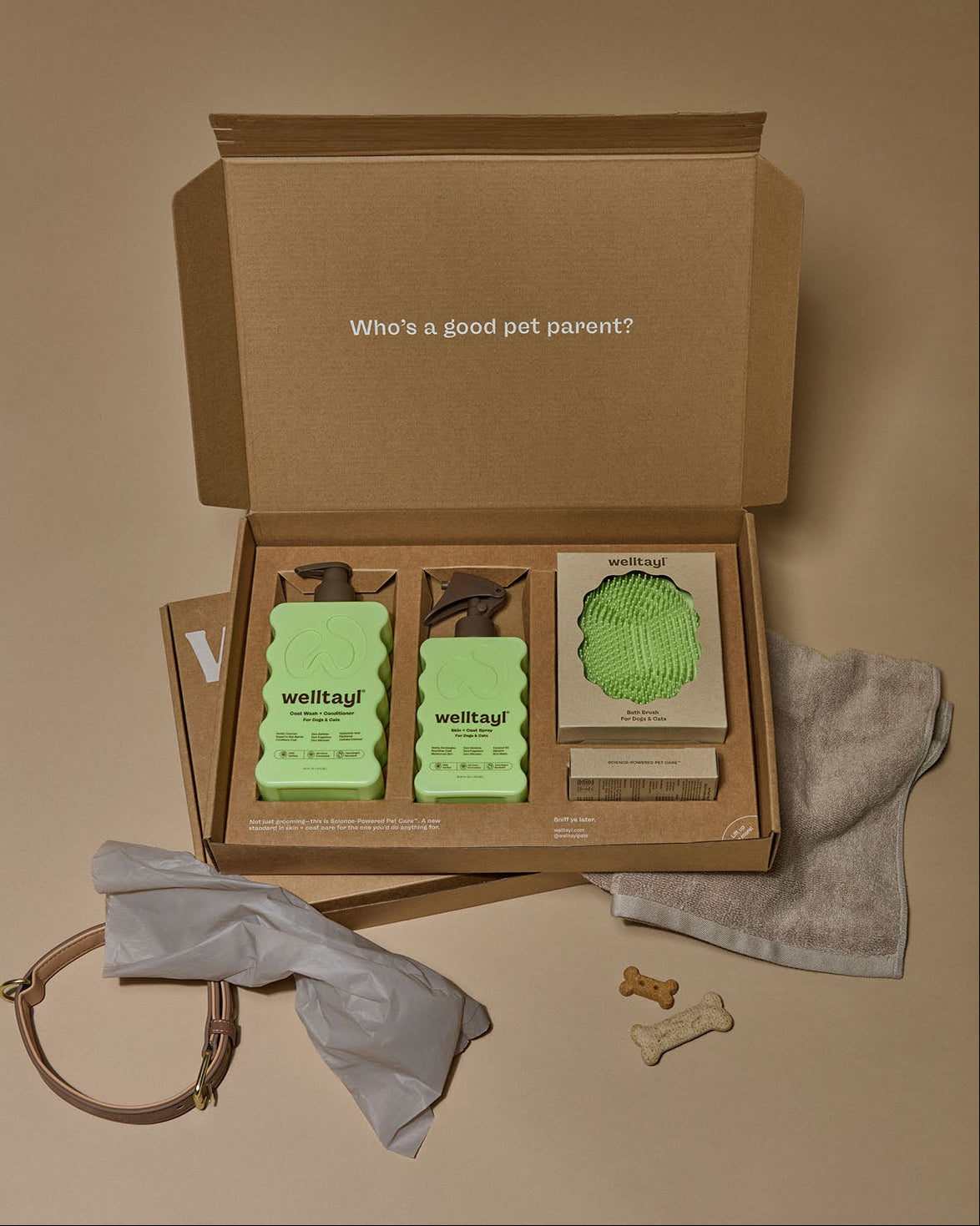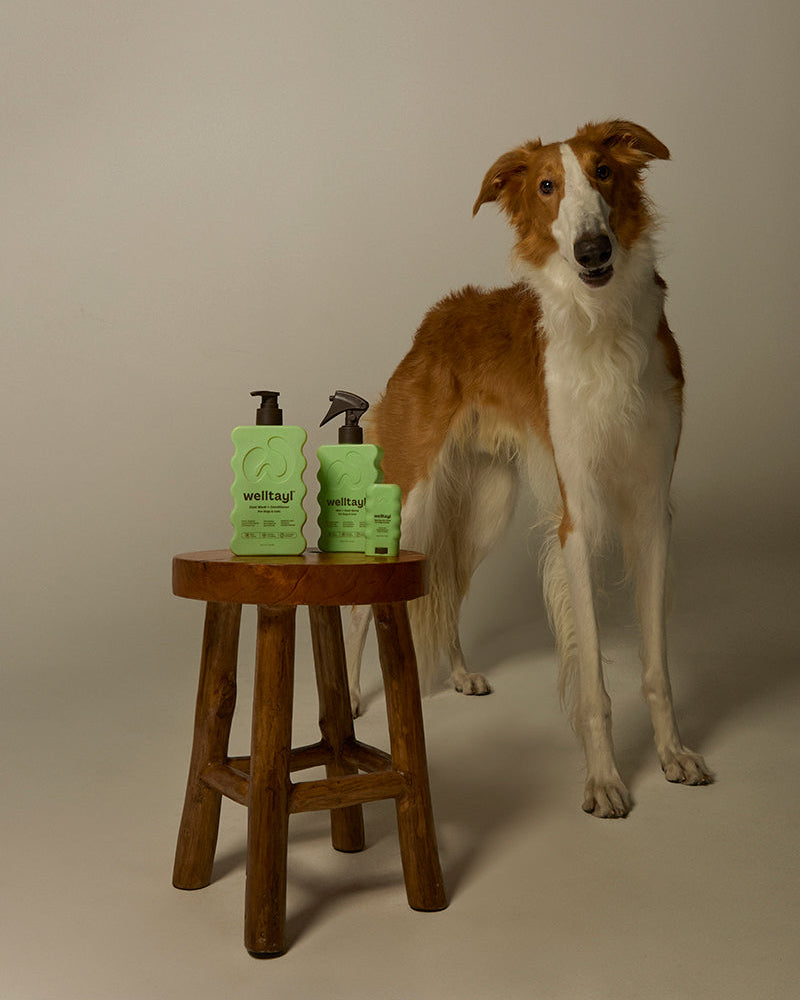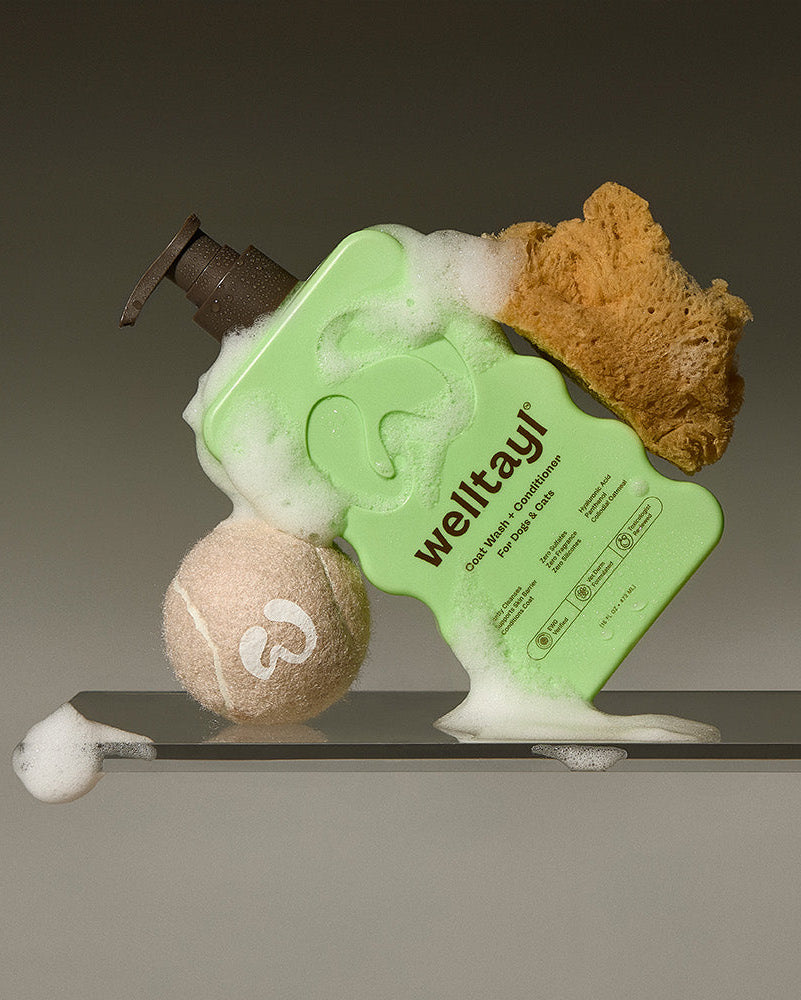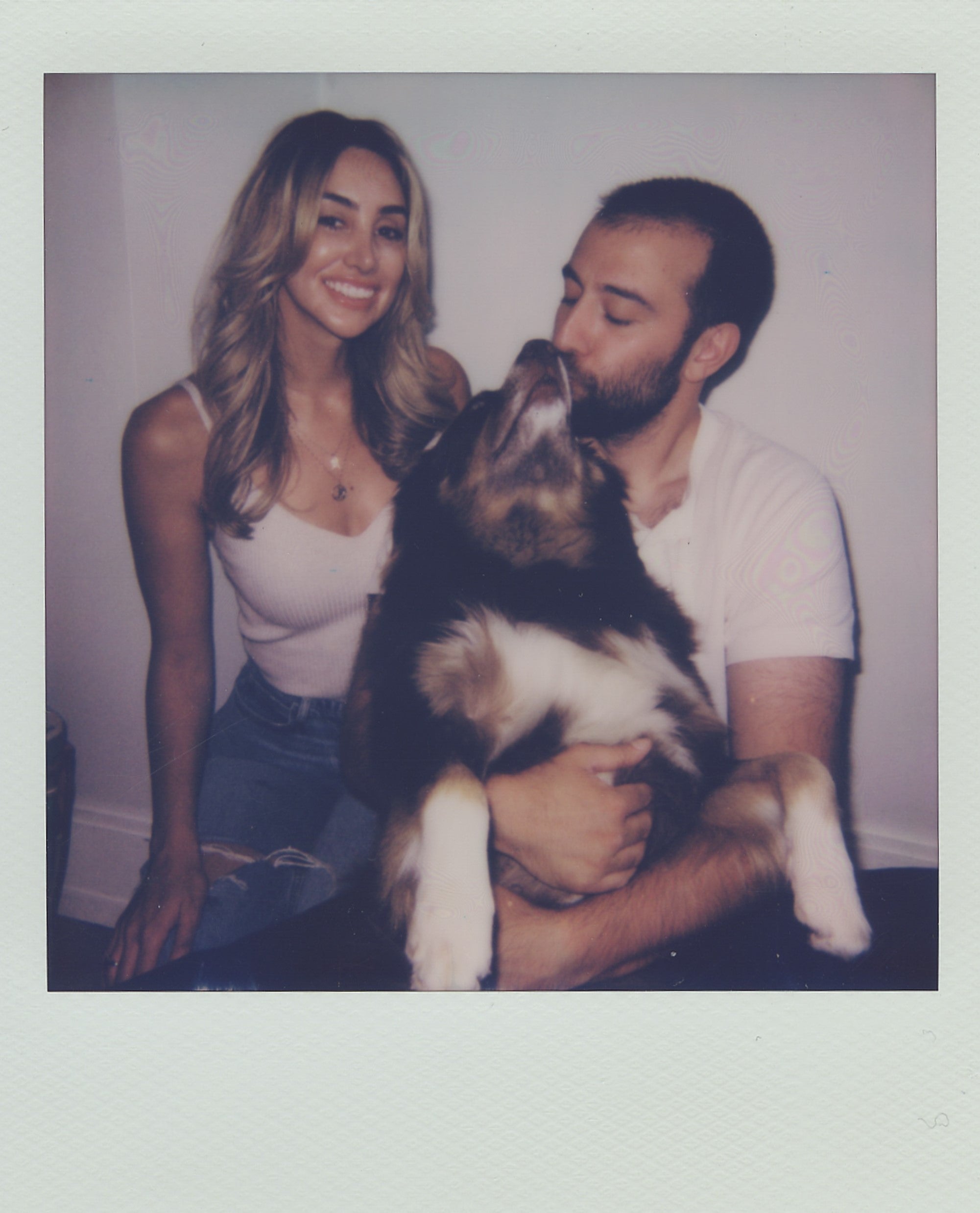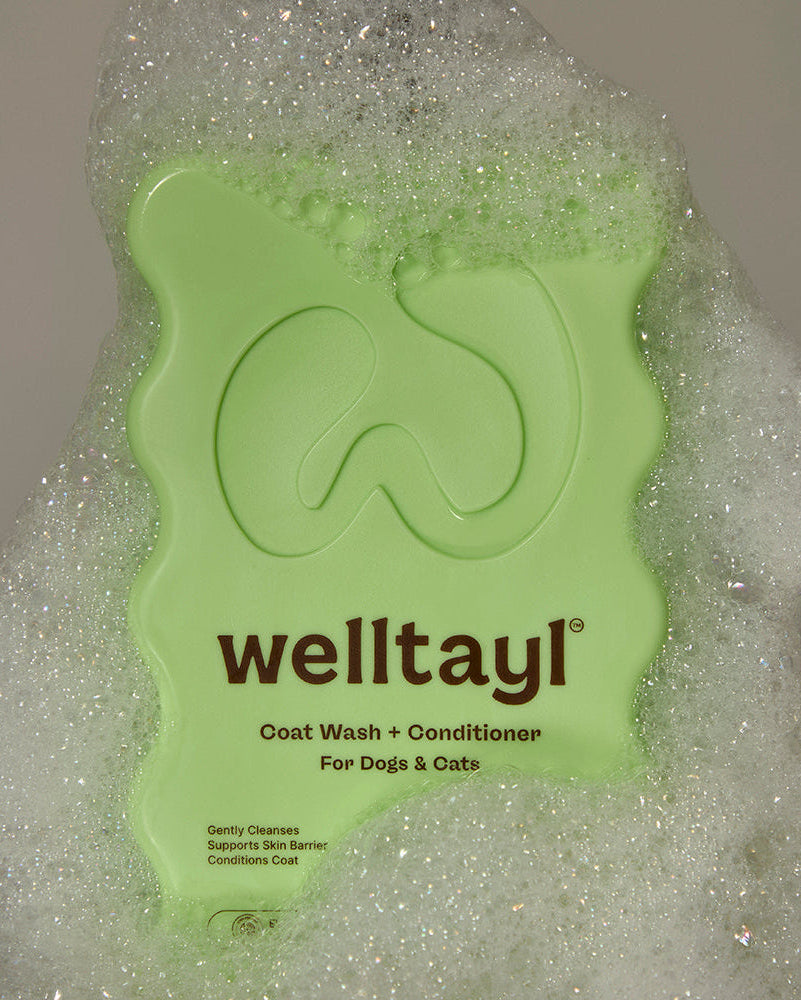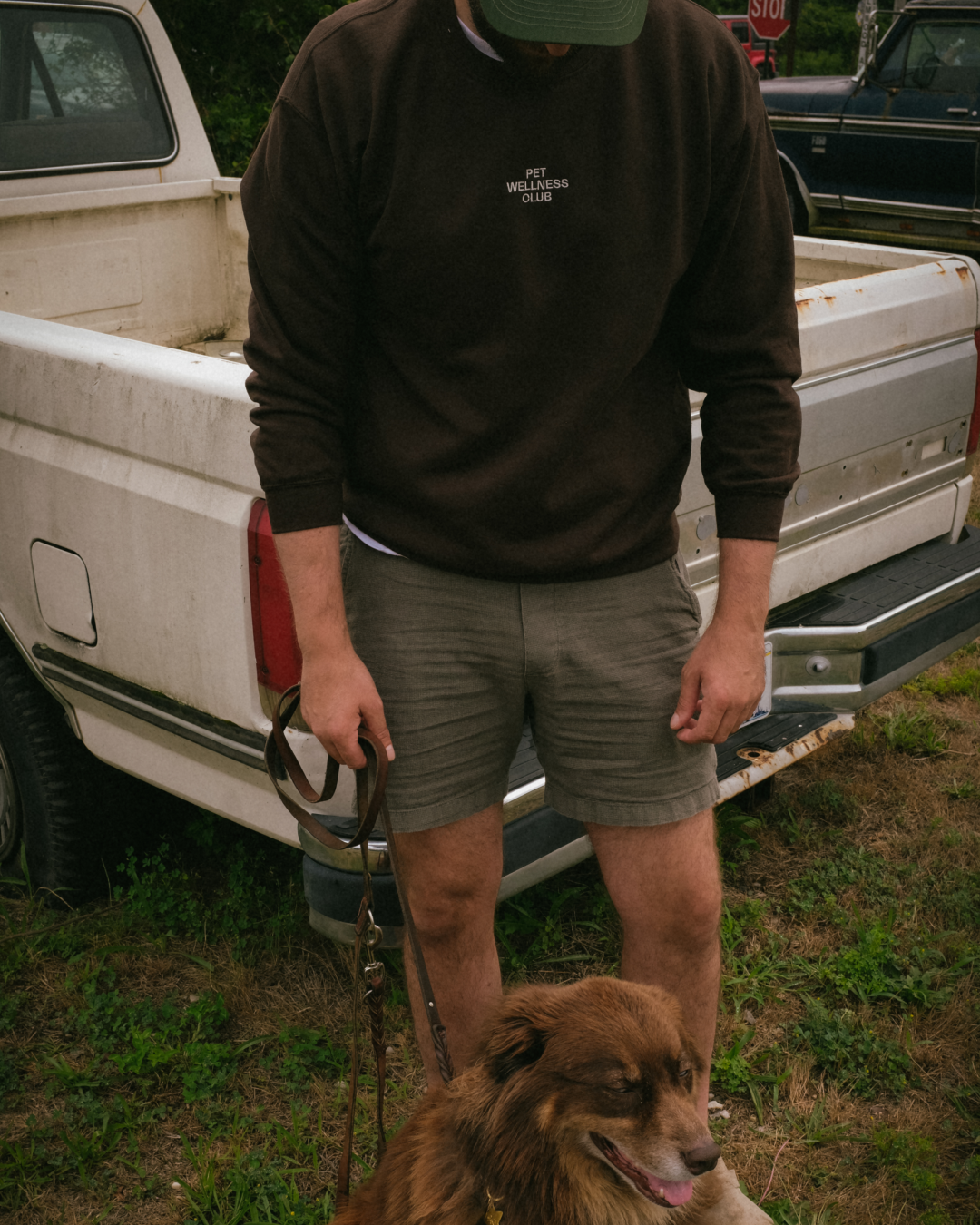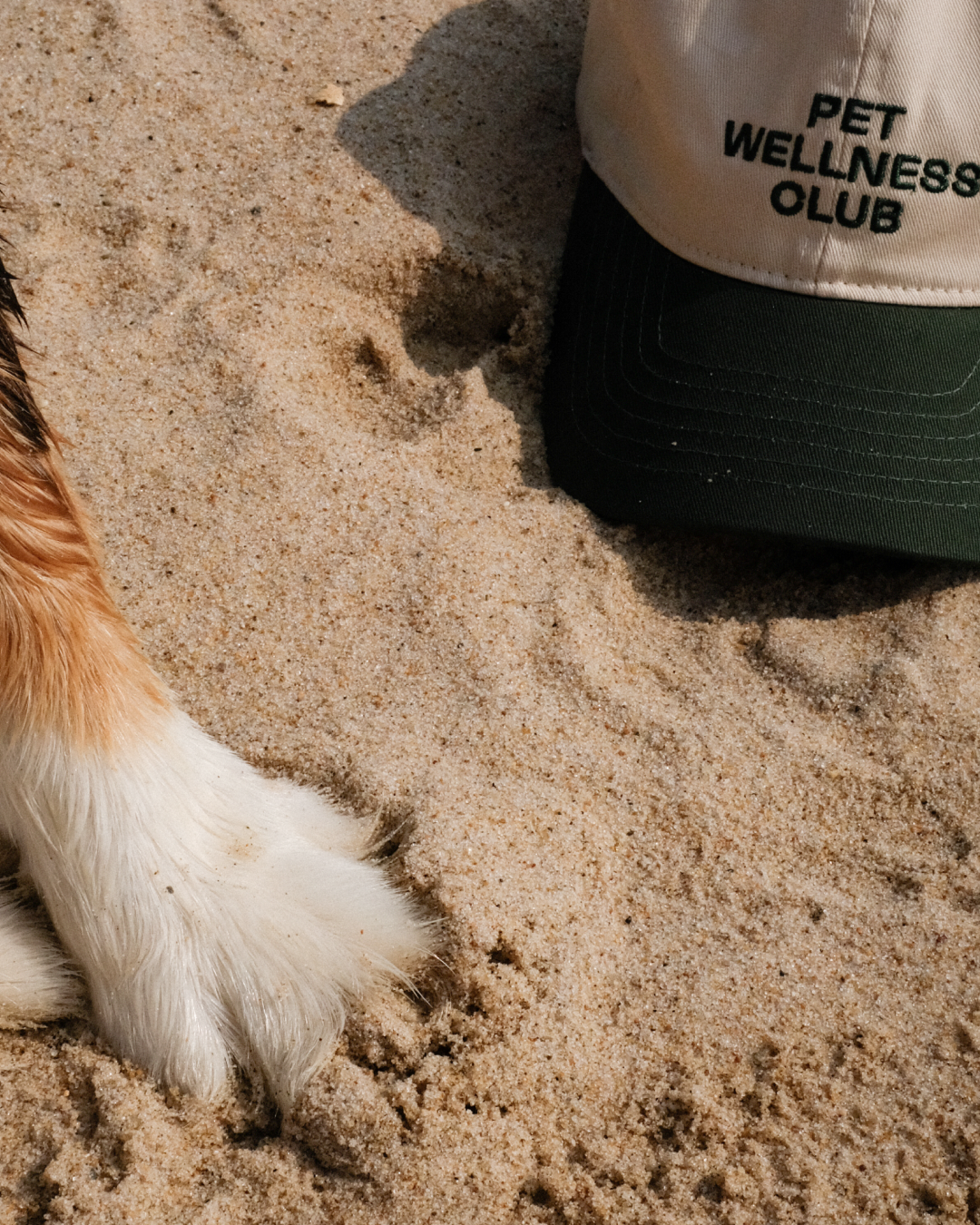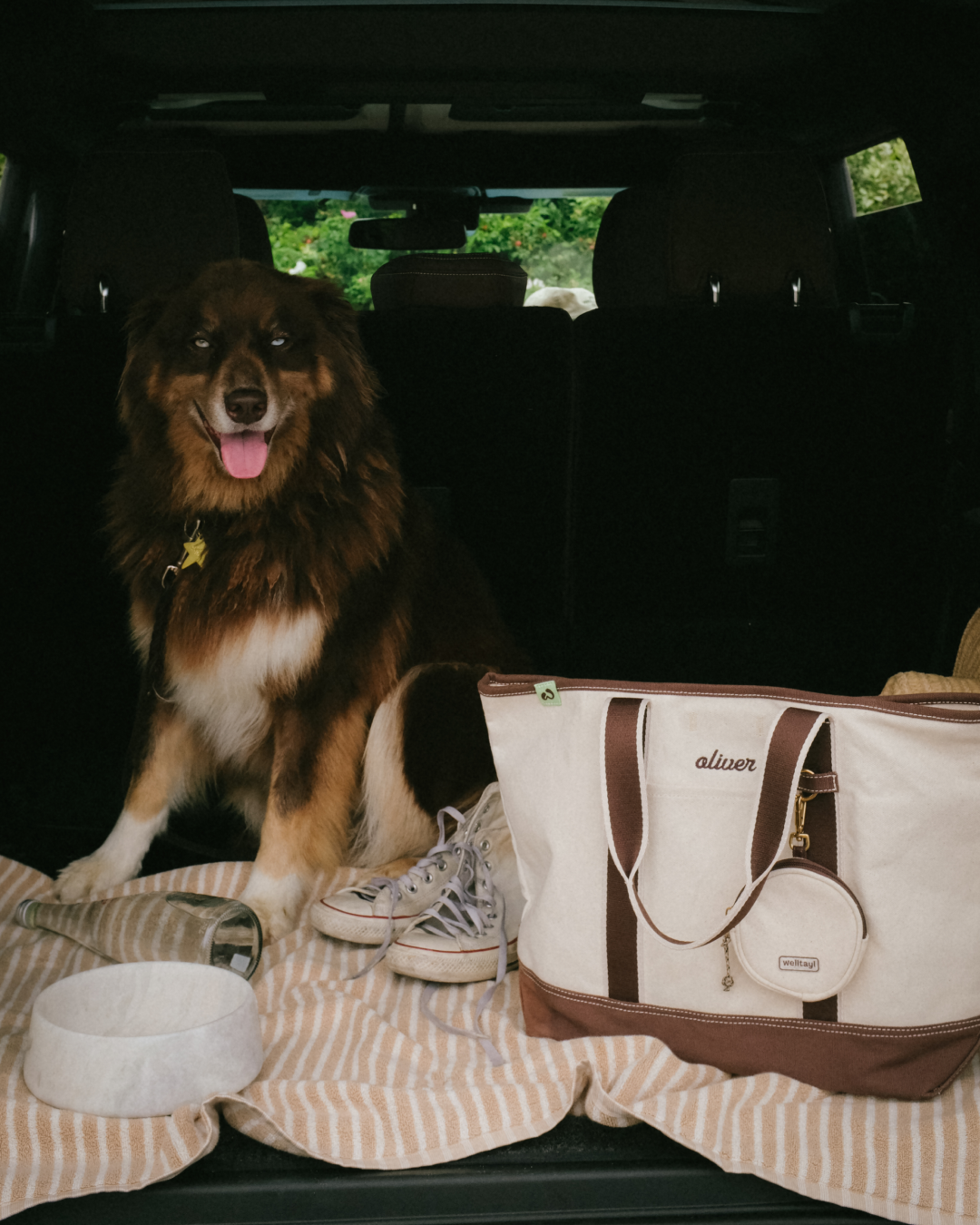Your dog's paws are like their shoes—they protect their feet from rough surfaces, sharp objects, and hot pavement. But just like shoes can wear out, your dog's paw pads can get worn too and even injured from time to time. Whether it's a small scrape, a cut from glass, or even a torn pad, paw injuries can be painful and need proper care to heal.
Table of Contents:
- Key Takeaways
- 5 Common Types Of Dog Paw Injuries
- 8 Tips For Preventing Paw Injuries
- First Aid For Dog Paw Injuries
- When To Contact A Veterinarian
- Conclusion
- Frequently Asked Questions
Key Takeaways
-
🤕 Dog paw injuries can include cuts, burns, cracked pads, ingrown toenails, or foreign objects, all requiring prompt attention to prevent infection or further damage.
-
🩹 Cleaning wounds, stopping bleeding, bandaging, and preventing licking are critical first-aid steps to aid recovery and protect injured paws.
-
🩸 Persistent bleeding, visible foreign objects, signs of infection, severe burns, or non-healing wounds are indicators to seek immediate veterinary care.
-
🐾 Regular paw care, such as trimming nails, inspecting paws after walks, and using protective booties, helps prevent injuries and maintain paw health.
-
🔥 Avoid exposing your dog to hot surfaces or harsh chemicals, and clean their paws after outings to reduce risks of burns, cracks, or irritation.

5 Common Types Of Dog Paw Injuries
Dogs' paws are tough but not indestructible. Various factors can lead to issues, ranging from minor scrapes to more severe injuries.
1. Cuts And Scrapes
Cuts and scrapes occur when dogs step on sharp objects like glass, nails, or jagged rocks. These injuries can cause bleeding, limping, and visible wounds on the paws. Clean cuts promptly to prevent infection and consider wrapping the area, if indicated. More severe wounds should be evaluated by a vet to ensure proper healing and to get antibiotics, if deemed necessary.
2. Burns
Burns on paw pads can happen if dogs walk on hot surfaces such as pavement or sand during the summer. Signs include redness and blistering. Cool the paws with clean, cold water and avoid walking during peak heat to prevent further damage.
3. Dry And Cracked Pads
Dry or cracked paw pads can result from harsh weather, frequent exposure to chemicals, or underlying health issues like zinc deficiency. Cracks can deepen, causing discomfort. Moisturize pads with pet-safe balms to promote healing and consider using dog boots during colder months for protection.
4. Ingrown Toenails
Ingrown toenails occur when a dog's nail grows into the paw pad, causing pain, swelling and sometimes even infection. This results from the nails not being trimmed often enough. If your dog is limping, check their paws first. Check your dog's nails routinely and maintain proper nail trimming to avoid complications.
5. Foreign Objects
Small objects like stones, burrs, or thorns often lodge between a dog’s toes. Symptoms include swelling, redness, discharge, licking and limping. Carefully inspect your dog's paws after walks and remove debris if necessary.
8 Tips For Preventing Paw Injuries
-
Trim Nails Regularly: Long nails can snag, break, or twist, causing discomfort or injury. Most dogs benefit from monthly nail trims.. Shorter nails reduce the risk of injury during play or walks.
-
Avoid Hot Surfaces: On those scorching summer days, hot pavement can burn paw pads. Only walk your dog on cooler surfaces, such as grass or in the shade. Consider walking in the early morning or late evening when it is cooler out. Check the ground's temperature by holding the back of your hand against it for 7-10 seconds.
-
Use Protective Booties: Booties shield paws from rough terrains, rocks, and extreme temperatures. They're especially useful on long hikes or walks. Train your dog to wear them for added protection.
-
Inspect Paws After Walks: Check paws for debris like small pebbles, thorns, or mud clumps lodged between toes. Removing these items ensures they don’t cause additional cuts or irritation.
-
Protect Against Extreme Temperatures: Avoid taking your dog out during the hottest or coldest times of the day.
-
Clean Paws After Outings: Rinse paws after winter walks to remove ice melt chemicals or salt. Ensure post walk their paws are free of irritants like mud or sharp debris.
-
Choose Safe Routes: Avoid paths with visible hazards like broken glass, jagged terrain or hot pavement. Inspect your yard routinely to keep it safe for your pet.
-
Deter Excessive Licking: Discourage excessive licking of paws, as it can cause infection and worsen injuries. If your pet is excessively licking their paws, schedule a visit with your vet. A cone may be necessary to curb the behavior while the paws heal.
First Aid For Dog Paw Injuries
Sometimes paw Injuries can’t be prevented, even if you take every measure above. In this case, knowing how to act fast is important for best outcomes in the event of an injury.
Cleaning The Wound
Start by rinsing the paw gently with warm water to remove dirt and debris and reduce contamination. For burns, use cool water to soothe the area. If debris like glass or rocks remains, carefully extract it, if possible, without pushing it deeper. Once clean, flush the wound with an antiseptic solution, such as diluted chlorhexidine.
Stopping The Bleeding
Press a clean cloth or gauze directly on the wound to halt bleeding. If the injury is deep, maintain consistent pressure until it slows. A stretchy, self adhering bandage material can be used to wrap the foot to control bleeding. Ice packing the area can help constrict blood vessels as well.
Evaluating The Severity
Stay calm while closely examining the paw for signs of swelling, deep punctures, or bleeding. If your dog is unwilling to bear weight or is bleeding excessively, veterinary attention should be sought as soon as possible.
Bandaging The Paw
Cover the wound with clean bandage material. This can be used to help control bleeding as well. Wrap gauze securely around the paw followed by a self-adhering bandage material.Ensure the wrap is snug, but not tight enough to restrict circulation.
Preventing Licking
Dogs instinctively lick injuries, but this can introduce bacteria and delay healing. Use an Elizabethan collar (e-collar) or a protective dog boot to prevent licking. These measures protect the wound while it begins to heal.

When To Contact A Veterinarian
Paw injuries often require professional care to prevent complications. Identifying these situations can protect your dog from prolonged pain or infection.
-
Persistent Bleeding: If bleeding doesn't stop after applying pressure for a couple minutes, a veterinary visit is essential. Continuous bleeding could indicate a deep cut or damaged blood vessel.
-
Visible Foreign Objects: Sharp objects like glass, metal, or large splinters stuck in the paw can cause further injury if improperly removed, requiring veterinary attention.
-
Infection: Swelling, oozing, or a foul smell from the paw could indicate infection, which needs prompt medical treatment to prevent it from worsening. Your veterinarian can prescribe antibiotics.
-
Severe Burns: Paws exposed to chemicals or extremely hot surfaces may need specialized care to treat blisters or tissue damage effectively.
-
Limping: If your dog refuses to walk or limps for an extended period, it might signal a fracture, sprain, or another underlying issue demanding veterinary examination.
-
Discolored Pads: Paw pads turning dark, pale, or abnormally red can suggest circulation problems or other injuries that will need a vet's evaluation.
-
Non-Healing Wounds: If wounds persist without healing after home care, professional intervention helps identify any complications.
Conclusion
Caring for your dog's paws is an essential part of keeping them happy, healthy, and active. By staying proactive with regular paw inspections, proper grooming, and preventative measures, you can reduce the risk of injuries and discomfort.
If your dog does experience a paw injury, acting quickly with the right first aid steps and seeking veterinary care when needed ensures they heal safely and comfortably. Your attention and care make all the difference in protecting your pet’s well-being.
Stay Updated with More Pet Knowledge!
For more dog info and knowledge, consider signing up for the Welltayl newsletter. It's packed with helpful advice tailored for dog owners like you, ensuring your pets stay healthy and happy. Sign up today and keep up to date with the latest in pet care.
Frequently Asked Questions
How can I tell if my dog’s paw pad is injured?
Look for symptoms like bleeding, limping, redness, swelling, or visible cuts. Other signs include your dog licking their paw excessively or avoiding putting weight on the affected foot.
What should I do if my dog’s paw is bleeding?
Clean the wound by rinsing with clean water to remove any debris, and apply pressure with a clean cloth to stop bleeding. If bleeding is excessive or persists after 5 minutes, seek veterinary help.
Are hot surfaces dangerous for dogs’ paws?
Yes, hot sidewalks or asphalt can burn paw pads. Avoid walking your dog on hot surfaces and opt for grass or shaded areas during peak summer heat.
Can a dog’s paw pad grow back if injured?
Yes, a dog’s paw pad can heal and grow back just like an injury to their skin, but the healing time depends on the severity of the injury. Proper care and protection are vital during the recovery process.
Is it safe to clean my dog’s paw with soap or water?
Water is safe, but avoid using human soap, which can dry out your dog’s paw pads. Use pet-friendly cleansers or simply rinse with warm water for routine cleaning.
Resources:
- "Wound Management and Healing," PubMed
- "Paw Pad Injury Outcomes in Dogs," JAAHA
- "Rock Salt Poisoning in Dogs," RSPCA
Read more
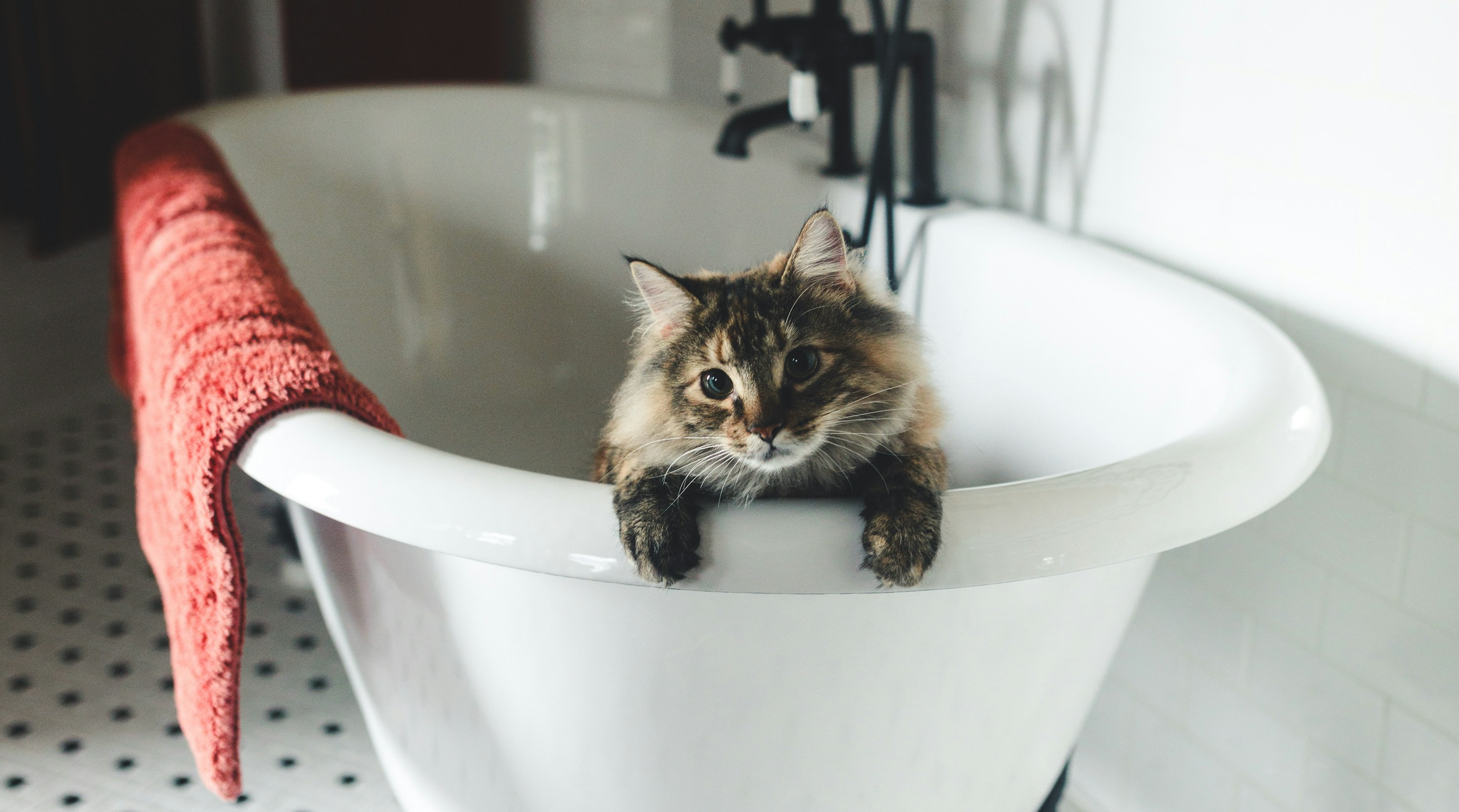
How to wash your cat with our step-by-step guide. Learn the best techniques for preparation, washing, and post-wash care to keep your cat healthy. Read more!
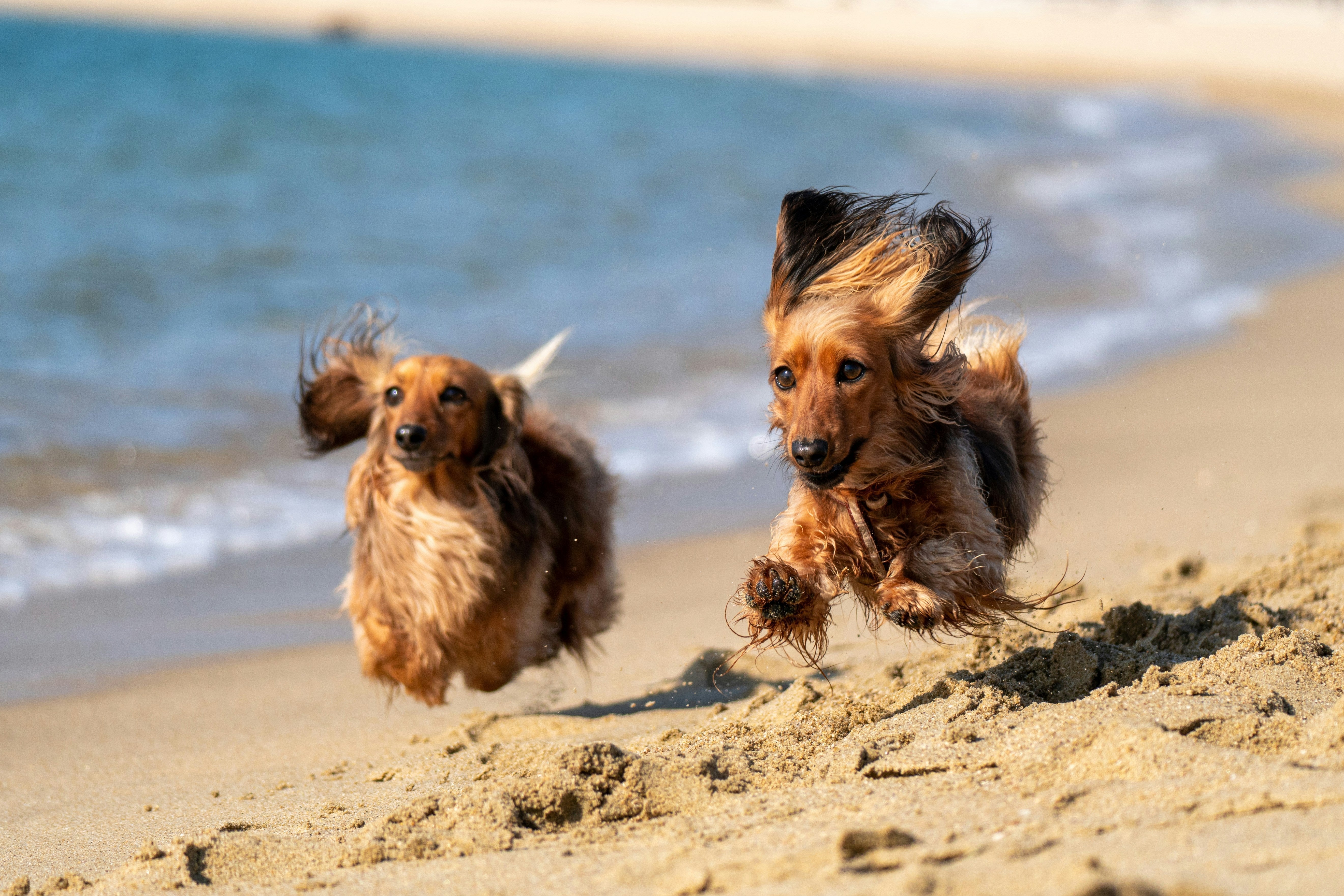
Discover why human sunscreen isn't safe for dogs. Learn how to choose and apply dog-specific sunscreen to protect your pet from harmful UV rays.

